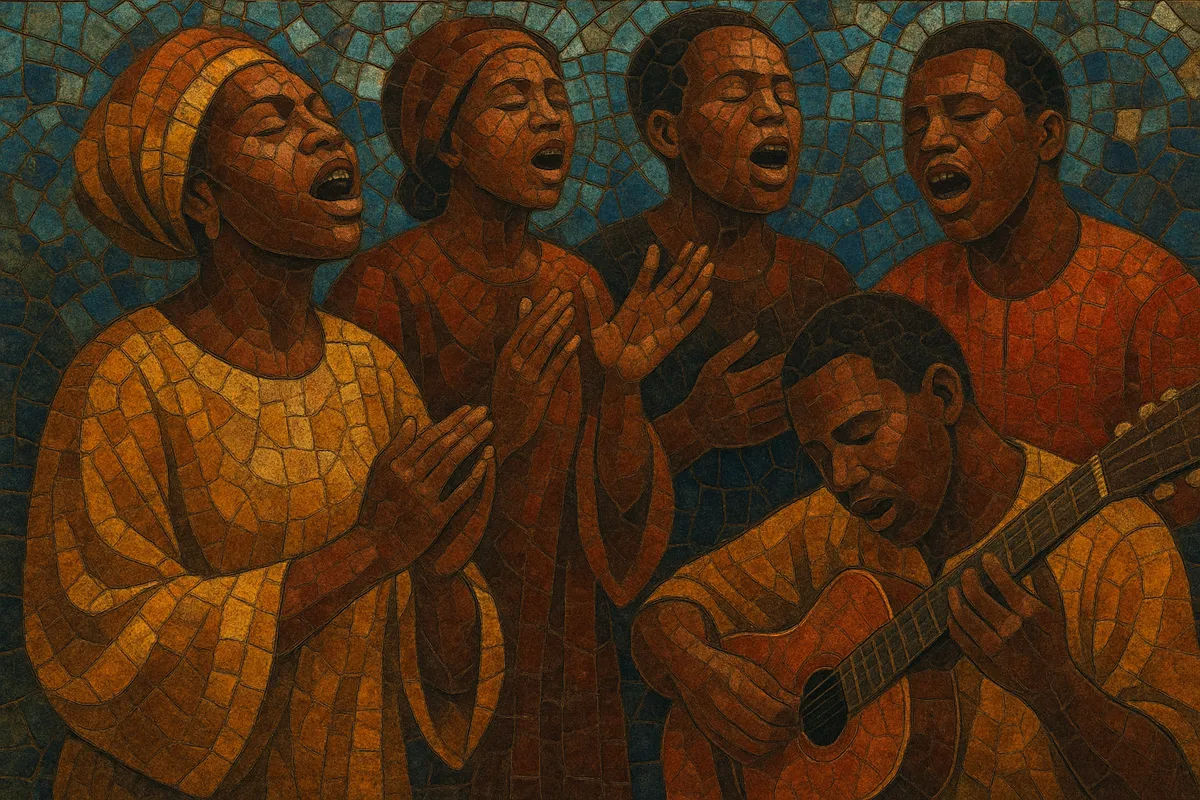
African gospel is a family of Christian sacred and popular styles from across sub‑Saharan Africa that blend church hymnody and American gospel with local rhythms, languages, and vocal traditions.
Typical features include powerful lead vocals answered by call‑and‑response choirs, richly layered harmonies, handclaps, and dance‑forward polyrhythms drawn from regional popular musics such as highlife, soukous, juju, makossa, and mbaqanga. Modern productions add drum kit, electric bass, syncopated guitars, keyboards, and, increasingly, contemporary Afrobeats and R&B textures.
Lyrics focus on praise, testimony, thanksgiving, and encouragement, often switching between English, French, Portuguese, and local languages (e.g., Zulu, Yoruba, Lingala, Twi). The style spans upbeat, celebratory congregational songs and intimate worship ballads, and is performed by soloists, praise teams, and large mass choirs.
Christian missions and African-initiated churches introduced hymn-singing, choral traditions, and devotional repertoire across southern, western, central, and eastern Africa. Local congregations adapted these materials with indigenous languages, call-and-response, and percussion, setting the cultural foundation for an Africanized gospel idiom.
In the postwar and early postcolonial decades, African gospel coalesced as choirs and small ensembles began recording repertoire that fused hymn tunes with regional popular styles—highlife in Ghana and Nigeria, soukous/rumba in Congo, mbaqanga and isicathamiya in South Africa, juju in southwestern Nigeria, and makossa in Cameroon. Radio and church circuits spread these songs widely, and cassette culture accelerated circulation beyond national borders.
Growing urban churches and crusades fostered the rise of mass choirs and energetic praise teams. Production values increased: drum kits, electric bass, bright keyboards, and intricate vocal arrangements became standard. The repertoire broadened to include both uptempo praise numbers and meditative worship ballads, aligning in part with global Contemporary Christian Music while staying rooted in local grooves and languages.
Pan-African collaborations, tours, and global awards showcased African gospel on international stages. Choirs and soloists from South Africa, Nigeria, Ghana, Kenya, DRC, and Zimbabwe gained large followings. Songs from African writers and worship leaders entered church setlists worldwide, aided by CDs, DVDs, and later YouTube and streaming platforms.
Streaming economies and social media amplified cross-border reach. Producers blended Afrobeats, amapiano, Afro-fusion, and modern R&B with gospel harmonies, while Central African acts revitalized soukous-inspired praise. Multilingual releases and live-in-concert recordings remain central, and African-origin worship anthems have become staples in global congregational singing.
Choose a regional groove as your foundation:
•West Africa (highlife/juju gospel): 100–125 BPM, 4/4, lilting syncopation, interlocking guitar lines and buoyant bass.
•Central Africa (soukous gospel): 110–140 BPM, bright up-tempo 4/4, sebene-style guitar ostinatos and animated congas.
•Southern Africa (choral gospel): 70–110 BPM, strong handclaps, isicathamiya/mbube-influenced harmonies and call-and-response.

